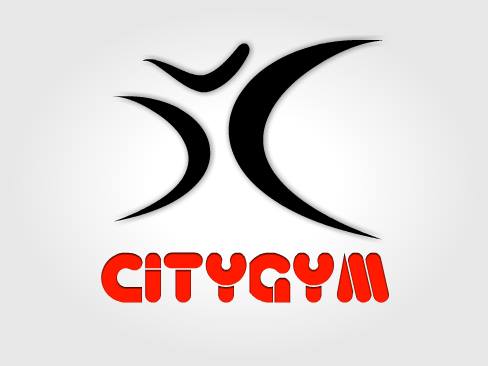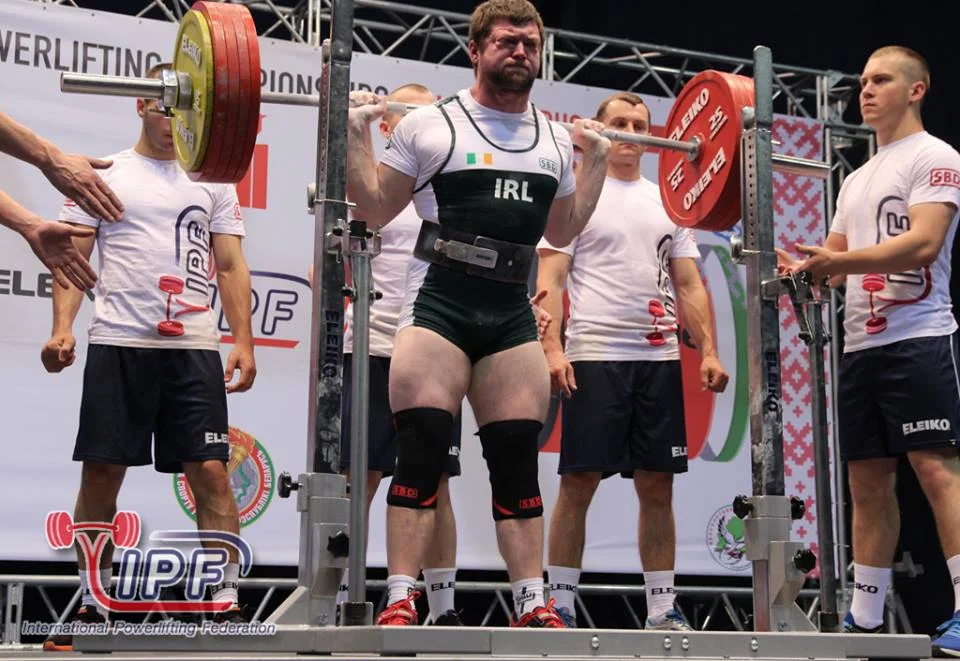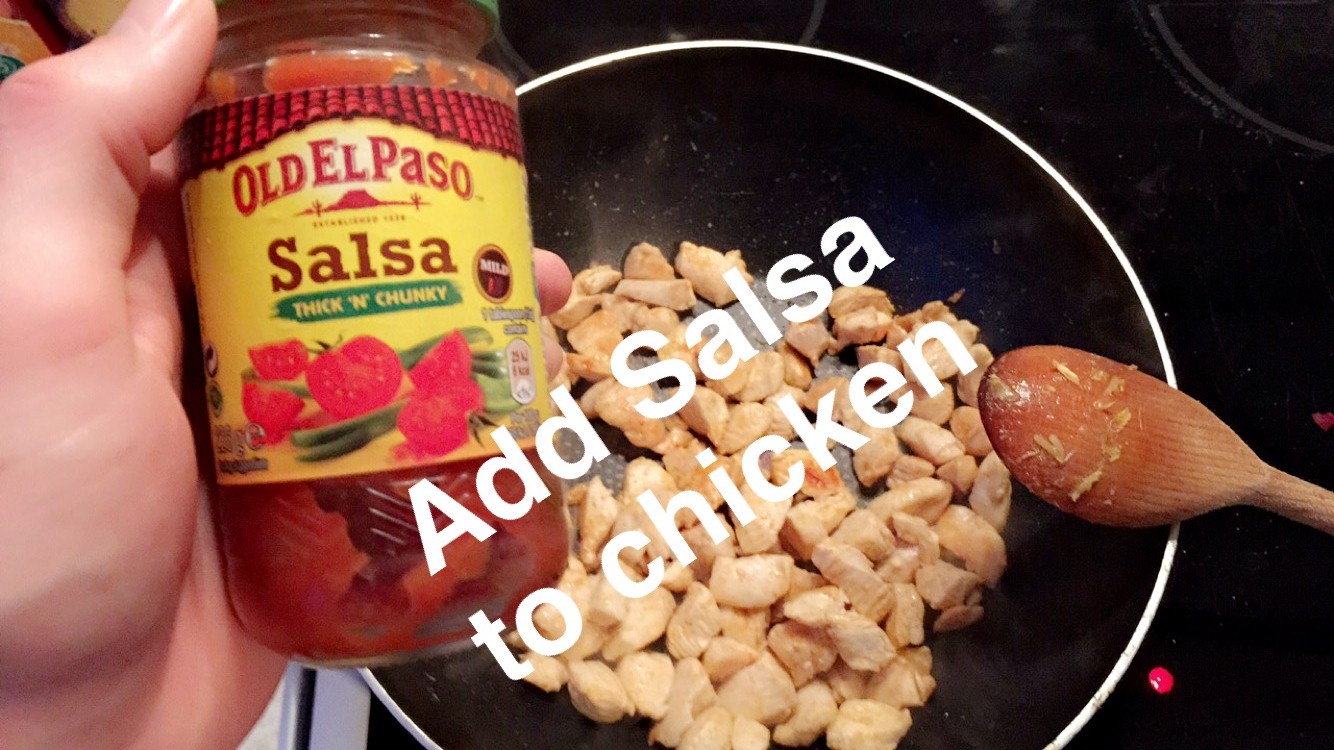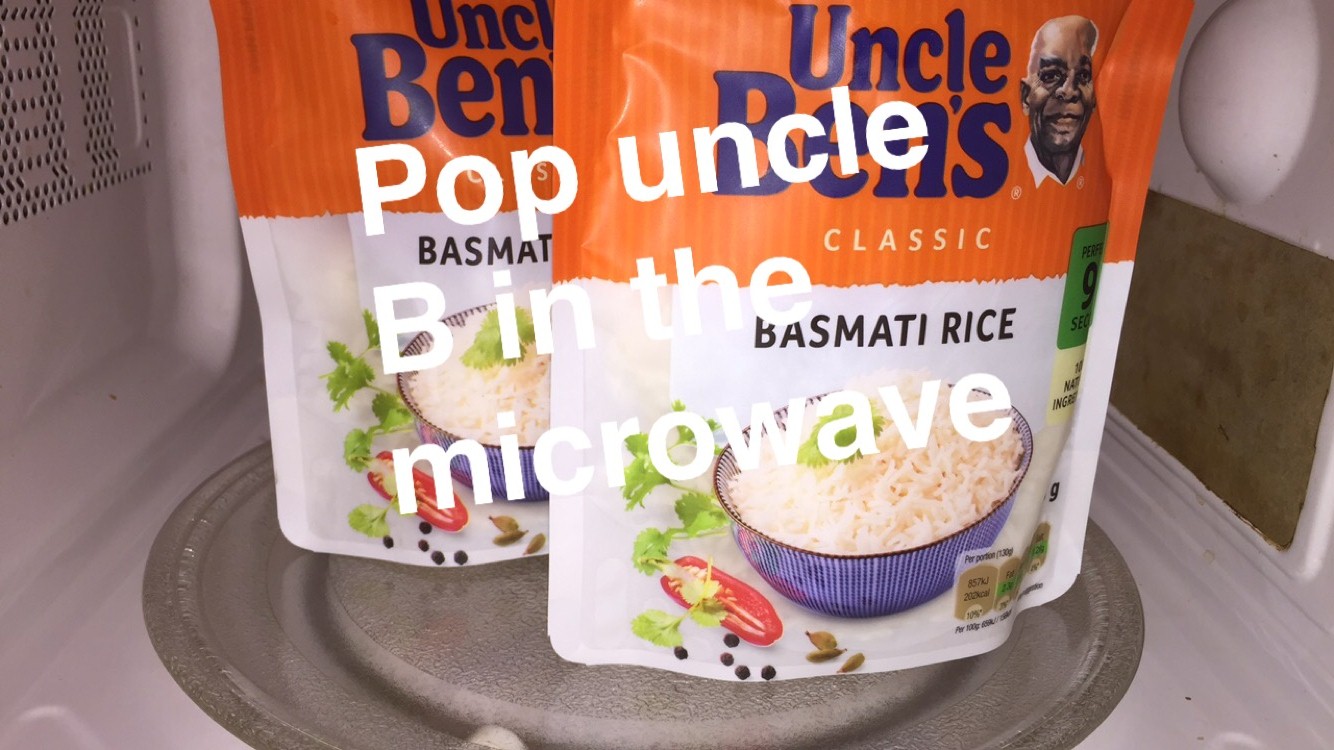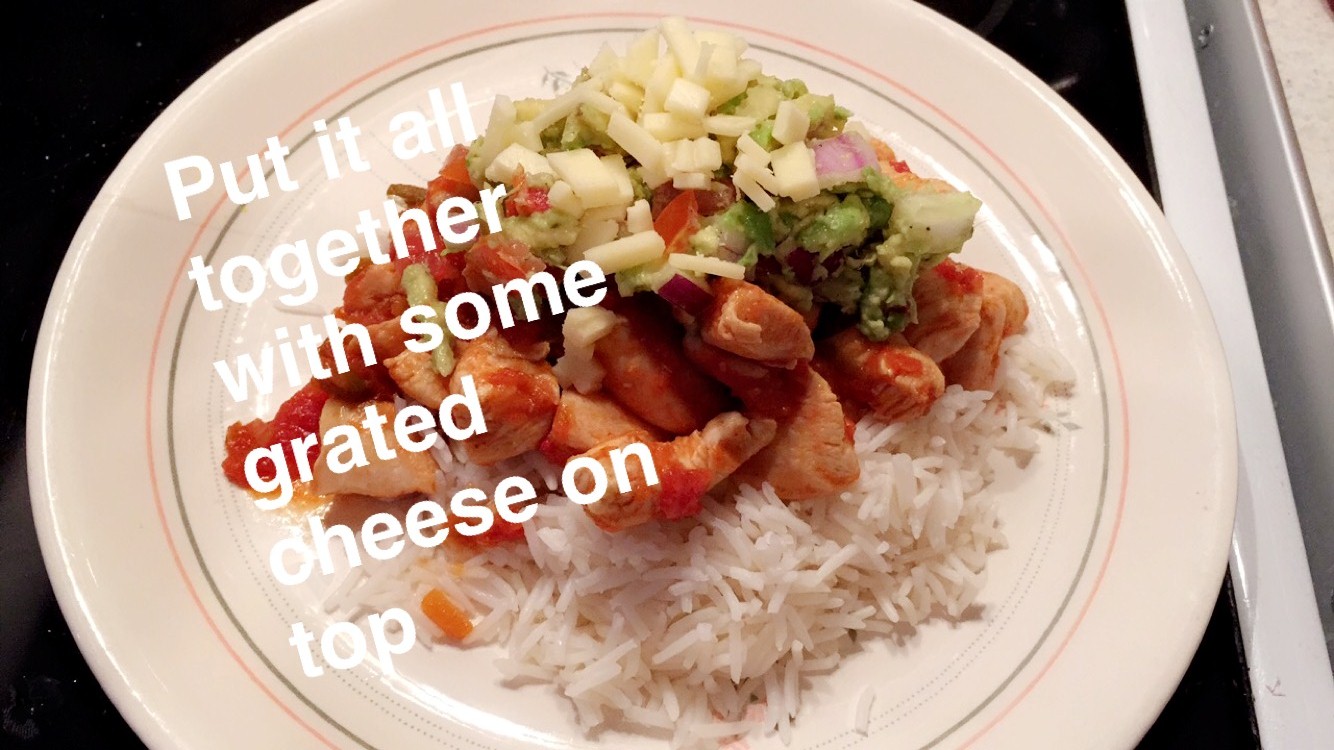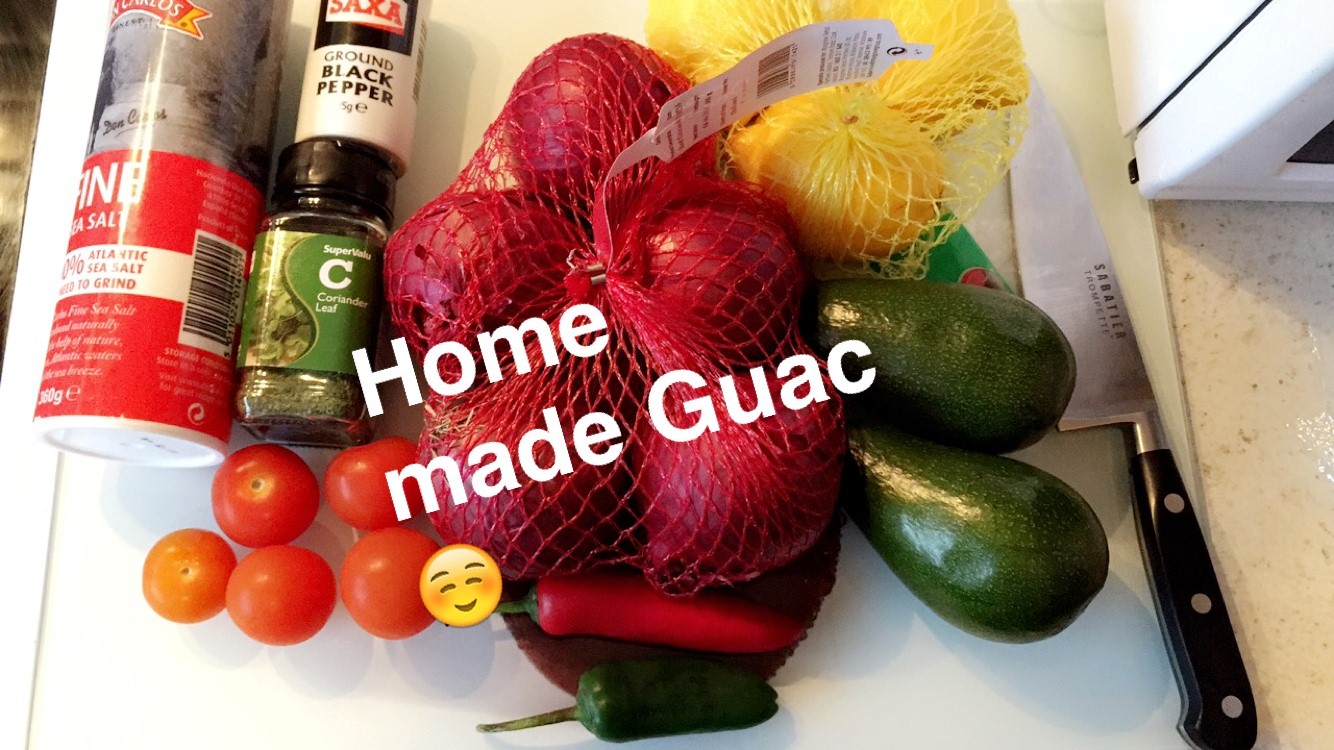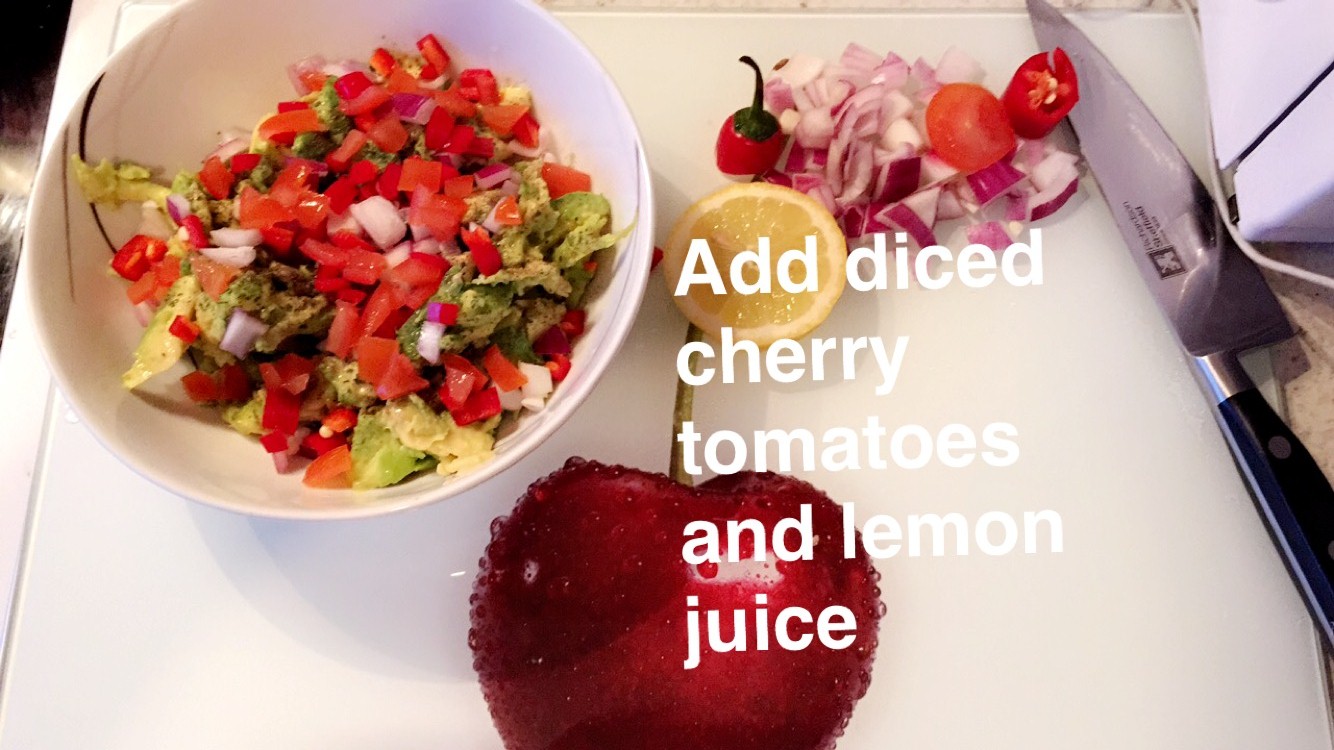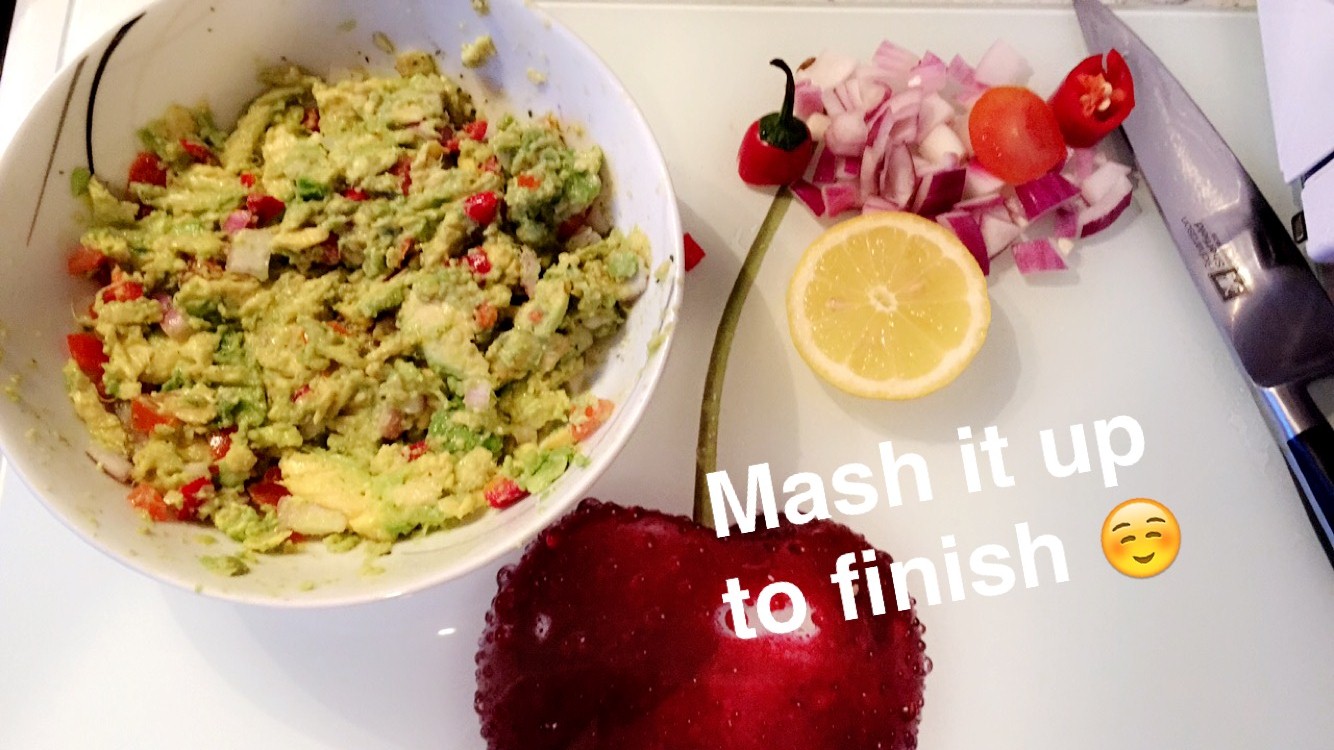The purpose of this article is not to necessarily to encourage or discourage someone from competing in Powerlifting, but more so for those who are considering competing in Powerlifting it creates awareness of what is actually involved
Why New Year's Resolutions Don’t Become Realisations
It’s coming to the end of the year, a time where people start to make big promises to themselves that the next year will be different, that you will be different in the new year. You may promise yourself that you’ll get the dream job this year, you’ll do a better job at the one you already have, you’ll quit smoking etc. We’re not life coaches or addiction specialists but we do know an awful lot about the biggest one out there “this year I’ll get the body I've always wanted”...... “this year I’ll become fit and healthy”.
This is not a bashing of people who begin their fitness journey in January, or saying that you are you are doomed to fail. We want to highlight the road blocks you may face and help provide some solutions towards them.
Right Intentions But Wrong Execution
You have taken your first step and you went to your local gym and bought your membership for 2018, great work big props to you! You are super stoked to get started, you have goals and you want to achieve them. Your motivation is through the roof, you're ready!
You walk in and it dawns on you, you’ve no idea what to do, how these machines work, what correct form looks/feels like and you’re kind of like... Well kind of like this
Regardless, you persevere, machine images, watching other gym members and YouTube videos provide most of your guidance on technique and if all else fails jump on the treadmill. Your muscles feel sore the next day so something is happening!
You continue doing this every day. You work super hard day in day out and after a month of this you expect great, wonderful and magical things to happen, but they don’t. This is a very realistic thing and can be quite damaging to that spark of motivation that you had at the start of the month. This could discourage you from going back for another month.
This would be the most common outcomes we see when people approach the beginning of their fitness journey. Some ideas to stop you running into these issues:
If you don’t know what you’re doing get someone that does to show you
Put a plan in place with someone who is well versed in training and nutrition. If you were looking to work on your car and you weren't familiar with cars, you'd hire a mechanic. If you want to work on your body and you don't know what to do, hire a coach
Track progress so even if you don’t see it (we all generally have a warped view of our own reality) you can see it in the data. Tracking morning bodyweights and forming weekly averages to see trends, body fat tests in the gym (Most body fat tests aren't all that accurate but keep using the same method for consistency and make sure the numbers are going in the right direction) and keep a training log to see progress over time
Try not fall for gimmicks, sadly this industry is filled with them. If someone claims to be great, investigate. What's their education? Who have they worked with? Have they got results with someone like you before? Look for proof, don't take someone at their word!
Don’t do exercises that cause pain or that you are unsure about how to execute the move
Keep motivation high, outsource what you don't know to a trustworthy proven professional and enjoy your sessions!
Radical Change Isn't a Good Thing
Most people are led to believe that in order to achieve their resolution every part of their life needs an overhaul. For example they believe that from January 1st onward they will never eat a take-away again, they will cease drinking alcohol and will never spend their time sat on a sofa all night watching TV.
Sounds like the perfect healthy lifestyle right?
Sure it’s ideal but is it realistic? Absolutely not. We do those things because we enjoy them, we do them with our friends and family as social occasions. Pursuing your ideal physique or fitness level will require small sacrifices and a certain level of restriction but a lifestyle overhaul is unwarranted and also may be hindering your long-term progress.
By overly restricting their diet to an extreme, you will probably see progress relatively fast. What happens after this? If you haven’t developed a lifestyle that you can consistently keep up once your goal is achieved you begin to revert back to your old non restrictive lifestyle and in many studies has shown your rebound weight far exceeds your previous starting weight.
Instead we want you to think about making small life changes that can be kept consistently over weeks, weeks will add up to months and months will add up to sustainable years. If you aren’t particularly active get more active but don’t jump into the deep end and kill yourself, if your eating habits are poor make a few changes towards a healthier day, don’t demonise every food you ate before just eat in moderation and substitute foods with a lower calorie more nutrient dense option.
Find A Gym That Cares
Most training facilities work on a model like a 90/10. This is, 90% of the people that sign up don't actually attend the gym for most of the year while the other 10% of "hardcore' members seem to never leave. This make sense when you think of how many members most gyms boast about. "5000 Members Strong", but when you look around that gym you'll think to yourself that only about 200 people could fit in their at any one time.
They do this by pushing cheap memberships, "15 Euros Per Month", which is enough for you to think that it's low enough not to attend and not care but not enough to actually go in and cancel it. With this business model they profit from you failing your goal. If you don't turn up, they still make their money and they don't have the running costs from you being there using electricity on machines, water in the showers and less usage of equipment.
A logical solution is shop around for a gym that invests in you! Where the staff aren’t staff but coaches, constantly helping you in order to make progress. Where if you don’t understand something they can break it down so that you are capable of it. If you’re carrying an injury they understand how to work around it.
Luckily there has been a rise in Private and Semi-Private facilities that do this. Where at no point is there not a coach on the floor looking out for you and what you want to achieve. These gym’s don’t work off the 90/10 model. They work off communities of people striving to better themselves each time they walk in the door.
These are the facilities you want to be in if you really want to make change in 2018.
Happy Christmas and Happy New Years,
Coach Dons
Liked this? Shoot me a mail at dons@citygymlk.com or find out a little more about me on our Team page here
5 Minute Meals - Home Made Burrito (2 Servings)
Home Made Burrito (2 Servings)
What You Need:
- 3 chicken fillet breasts
- Cayenne pepper to spice chicken
- Old El Paso salsa
- 2 minute microwave rice
- Grated cheese
- Home Made Guac (Click for recipe)
How To Prepare and Cook:
- Heat some butter in the pan
- Toss in 3 diced chicken breasts which have been coated with cayenne pepper
- When chicken is nearly ready stir in approximately 1/2 of Old El Paso tub of sauce and then pop two "Single Serving" packs of rice into the microwave
- Place the cooked rice on the plate and pour the cooked chicken pieces over
- Top with Home Made Guac and enjoy!!
LIKE THIS? CHECK OUT OUR FREE PREP GUIDE HERE (PS IT'S FREE SO DON'T ENTER CARD DETAILS AT THE CHECKOUT!) Or follow us for SnapChat Meal Ideas on SnapChat, username "citygymlk"
Macro Counters, my actual meal here had:
Protein - 44g, Fat - 14g, Carbs - 41g, Fiber - 7g (532 CALS)
Home Made Guacamole
Try this at home to spice up the home made burrito
You Will Need:
- 2-3 avocados
- 1/2 onion
- 1 chili
- 3-4 small cherry tomatoes
- Juice from a lemon slice
- Fresh coriander
- Sea salt
How to Prepare:
- Put 2-3 avocados in the bowl
- Add 1 chopped chili, a 1/2 of a chopped onion and 3-4 diced tomatoes and add to bowl
- Squeeze a lemon slice over the mix and add salt to taste
- Mash it up and enjoy as a topping for different meals! :)
Body Image Troubles - Coach Dons
Our society is bombarded by images of modified unrealistic expectations of the human form. We should all know this has led to a rise of eating disorders and body dysmorphia. But I’m not here to to talk about that. I want to talk about how I dealt with the insecurities cause by society. Recently a friend showed me an app where, like in the media, you can alter facial and body structures. Model editing accessible on your phone…. We have been made so insecure, we are now promoting unrealistic expectations of ourselves, causing other people to be made feel insecure about you’re unrealistic promotion of yourself.
“The 5 minute transformation” guess I can stop lifting now everyone will think I'm massif on insta!
Irony? Everyone can feel insecure, that does not have to be a bad thing…. I’m going to use myself as an example: Before i started training at 16, I was overweight essentially my entire youth and teenage years. So I trained like a madman! Literally….. Took a year or so of nothing but salads, mini circuits in my room twice a day and the occasional cycle from Rathkeale to LimerickCity. I wanted to be cool and didn’t think I was cause I was fat, probably is more so cause i’m weird lol. One year and there wasn’t a pick on me.
Donnacha journey from 15years old on the left to 20 on the right
Was I Happy? No! I couldn’t say I was fat but now I was lanky. I Got this bodybuilding craic wrong! So I studied, read and watched everything I could and became a “BRO”. Worked hard and up until the past year not the smartest but I've made sizable progress I know that. Still insecure? Certainly….. Am I mad bro? No. Look what it’s done for me. Without being insecure i’d have never of started. I would never of completed my goal of first show by 20 (and not look like crap lol). I wouldn’t of learned what I’ve learned and met the people I’ve met. Most importantly help others overcome the same feeling I feel! Give in to your insecurities and let it be the driving force to make positive changes to your life. I can’t guarantee you you’ll ever not be insecure, but if you work hard and smart you will be able to look back to where you came from and see the progress you’ve made. Look at where you are now and where you have come from and continue to make progress, don’t focus on the distance of the destination.
Take home point: Don’t let your insecurities cause unhealthy behaviors. Use it to make you work hard and safe. It will take longer but you will be better everyday. If your insecurities don’t stop never stop your journey to the greater you!
Coach Dons
Interview with Michael Carroll of Fit For Golf Cork
Interview with Michael Carroll of Fit For Golf Cork
Art: Michael, delighted you agreed to be interviewed for the CityGym Blog. I know you well from our Sport and Exercise Science days but for those who aren’t familiar with you, can you give a brief outline of your background in Sport, what led you into the field of Strength and Conditioning/Physical Preparation for Athletes, your qualifications etc.?
Michael: Firstly Arthur, thanks to CityGym and yourself for asking me to contribute to your blog.
In terms of sporting background I tried a lot of different things growing up. GAA, soccer, golf, and athletics being the main ones. I went through spells of emphasising one or the other throughout my teenage years. Jack of all trades, master of none would be a pretty accurate description!
I knew from about 16 that I would be interested in working in training or coaching to some degree. I loved the process of breaking down the sport you are competing in and thinking about how you could train to try and improve it. At around this time I joined a local gym called Fitnessworx, where I ended up working after first year in college. (I am still based there). Fairly quickly I could see a link between improved strength and power in the gym and performance on the pitch, golf course, or track. I genuinely enjoyed training and used go pretty regularly before school in 5th and 6th year. I would see the trainers in Fitnessworx training people and thought it looked like it was a great environment to be in. At around this time my older brother also started studying Sport and Exercise Science in UL. I can remember reading some of his assignments and notes and finding them really interesting and it grew from there.
Qualifications:
BSc in Sport and Exercise Science from the University of Limerick
UKSCA accredited Strength and Conditioning Coach (ASCC)
Titleist Performance Institute level 2 Golf Fitness Professional
Art: Before we get into the Fit For Golf, I’d like you to share some of your experiences from your internship at Cressey Performance, Florida, A World Renowned Strength and Conditioning Facility. I acknowledge it was a few years ago now so the experiences maybe aren’t as fresh in your head anymore but what really stuck out for you about the place? What is it that makes them so successful and highly regarded?
Michael: In 2013 I spent 3 months interning at what is now known as Cressey Sports Performance. Three things that immediately stick out about the facility are, the culture and community feel they have in place, the huge attention to detail when it comes to coaching, and the professionalism of the staff and clients training there. It was a great place to work, the coaches were all excellent at what they did and you were dealing with extremely motivated athletes for 7 hours a day. It’s basically like a coaching boot camp. With their internship program you get thrown in at the deep end which is great as you are exposed to a huge amount of coaching. The full time staff and owners there were also always extremely helpful with any questions you might have. It wasn’t until I came home and started coaching again I realised how much more I was seeing when I was watching people.
I believe they are extremely successful because they are excellent practitioners working with very much a niche market. 90% of the athletes training there during my internship were baseball pitchers. Most Irish people who haven’t spent time in America don’t realise just how big baseball is in the US. When word spreads about the quality of service that is provided coupled with the fact you have an extremely specific market I think a business can really gather momentum. This has proved to be the case with Cresseys’ as they have opened a second gym since I came home.
Art: Ok now onto the Fit Fir Golf Cork. This was a project you started up on your own. What is it? What does it entail and who is it for? What motivated you to setup the service?
Michael: Fit For Golf is a strength and conditioning / physical preparation service for golfers. Essentially I try to help my clients increase their golf potential by giving them a better physical starting point. If somebody is in very poor physical condition and has a body that is not able to perform relatively athletically it makes the game very difficult. Most people are familiar with football or hurling teams having a coach that looks after the physical element of training. Fit For Golf does the same thing for golfers.
I am currently working with all levels of golfers from high handicaps to club professionals in both individual and group settings. The process is quite simple. Everybody’s first session is an assessment and screening which involves a chat about how their body is currently and how they think it might be hindering their golf. We also go through a physical screening to see what level and what specific areas we might need to start with. Quite often I liaise with the players golf coach (if they have one) to get some information from them in regards to what they see from a physical standpoint during the swing. The Titliest Performance Institute (TPI) screening protocols have been useful in this regard.
After we have the initial screening and assessment done and a plan of attack has been made there is a number of different training options available to the client.
Art: How important is non-specific strength training (i.e. Squats, bench presses, rows, deadlifts, chin ups, power cleans etc.) for golf performance?
Michael: General or non-specific strength is extremely important as it provides a vital base for progressing onto exercises that might have a greater transfer to the sport. If someone isn’t strong in basic movements it is unlikely they will be benefit very much from more specific exercises. One of the key determinants for club head speed (a very important playing variable) is the ability to rapidly push a lot of force into the ground through the legs. Obviously this is determined by lower body strength and power so this can be a good place to start!
The way I program training for golfers varies massively depending on their current strengths and weaknesses. For example Arthur, imagine tomorrow that you came to me for help training your body for golf. As you are already very strong in general exercises like deadlifts, squats, single leg variations etc there would not be much point in us training to improve these. You would likely benefit more from work in lateral and rotational patterns, and from learning about the optimal sequencing used in the golf swing. On the other hand, I currently train a golfer in their 60’s, who at their best had a handicap of +2 (2 shots better than scratch). This person has seen huge benefit to their game from getting stronger on “non-specific” exercises because their baseline level of strength was so low.
Art: How important is rotation (and even anti-rotation) training for physical preparation in golfers?
Michael: Training rotation is extremely important. Once an athlete has decent basics in posture, mobility, stability, sequencing etc there are two main areas I try and get athletes stronger and more powerful in. These are vertical or ground reaction force (which is governed by lower body strength and power), and rotational force. If you can push your feet into the ground hard, and rotate hard you won’t go far wrong in terms of training power for golfers. Simple examples of these would be squat jumps, and rotational med ball throws.
In my opinion anti rotation is useful to train but I wouldn’t say it’s a necessity to train directly. In a simple, properly executed program I think the client gets enough work on stabilizing their pelvis. I usually tackle this with exercises like renegade rows, single leg deadlifts, plank variations etc.
Art: When I hear the phrase “Functional Training” I cringe and probably die a little inside as I envisage idiots doing squats on a swiss ball or simulating a punching action while holding dumbbells, but what does the phrase mean to you?
Michael: Speaking of functional training I actually wrote this answer while balancing on a bosu ball while pressing my tongue into the left side of my pallet and sucking my bellybutton to my spine J.
On a serious note though I think there is a basic misunderstanding of the terms “Functional Training” “Sports Specific Training” “Core Strength” etc. It seems a lot of coaches are completely on one side of the fence with limited critical thinking on their own part.
On one side you have the “functional strength” guru who tries to make everything as complex and gimmicky as possible, with “exercises”that often look impressive to the uneducated eye but have little merit in the program. Squatting or swinging a golf club on a swiss ball are perfect examples. Just because they are hard does not mean they are worth doing. Don’t get me wrong, I have no problem with people training balance or doing the odd fun game at the end of a training session as long as it’s safe and not completely ridiculous. Sometimes people lose the plot completely though and have a very poor understanding of how to breakdown a sports movement and what modes of training are likely to enhance it.
On the other hand you have “strength coaches” who believe that getting stronger in barbell lifts and chasing numbers is the holy grail. Taking everything said on t-nation as gospel is a perfect example of this.
There needs to be a balance. Athletes aren’t powerlifters or Olympic weightlifters, nor are they circus performers so they shouldn’t train like them. Analyse the movement, analyse the individual on an ongoing basis, always think of the transfer the training will provide.
To get back to the question, “Functional Training” to me means training that is fit for the purpose it is being done for. For bodybuilders this might be bicep curls, for a sprinter it may be jumping.
Art: If you could go back in time and give a younger Michael Carroll a bit of advice in relation to training or coaching, what would it be?
Michael: Without doubt I would say that most coaches concentrate way too much of their study time looking up exercises, diets, special programs etc. While learning these things is important to I think most coaches will make better long term progress if they realise that they are dealing with humans.
Study how humans learn new tasks. Ie motor learning and skill acquisition
Study how humans interact and behave. In coaching you come across a lot of personalities, if you don’t find ways to get on with someone it’s irrelevant how good your program is and you will lose business quickly.
Practice coaching in as many different settings as possible, young, elderly, elite athletes, desk jockeys, disabled, annoying clients, enjoyable clients. Get as many different perspectives as possible.
Look the part – Image and first impression are key, you need to look like you train and be able to demonstrate things, wear appropriate attire, etc.
5 Minute Meals - Salmon, Eggs and Avocado
The aim of 5 minute meals is to bring you quick nutritious food for those people who seem to be so busy they need 25 hours in a 24 hour day.
Salmon, Eggs and Avocado
What you need:
- Eggs (As many as you require, I used 4)
- Salmon (As many grams as you require, I used 200g)
- Avocado (I used 50g)
- A small bit of butter to cook in
Just a small point to make. I eat an outrageous amount of calories, check calories at the end and tailor this for your needs.
How to prepare and cook:
- Heat the pan to a searing heat and drop your butter in
- Crack eggs and toss them in the pan
- Cut your avocado and salmon to your desired size
- Finish cooking the eggs and pop all of the above on a plate
- Voila :) Easiest meal yet!!
This is the last of the breakfast 5 Minute Meals series. Tune in next week for the start of the lunch series!
LIKE THIS? CHECK OUT OUR FREE PREP GUIDE HERE (PS IT'S FREE SO DON'T ENTER CARD DETAILS AT THE CHECKOUT!) MORE 5 MINUTE MEALS COMING NEXT WEEK!
Macro Counters, my actual meal here had:
Protein - 70g, Fat - 46g, Carbs - 1g, Fiber - 1g (707 CALS)
Lifting with Cystic Fibrosis
Lifting With CF - An Article By Rob, a CityGym Member
May 2015 I was a completely different person. My Cystic Fibrosis (C.F.) had progressed to the point where my lung efficiency had fallen to below 40%, I was seriously underweight and my Liver was beginning to fail me so I was now being assessed for the Liver transplant list.
Having heard about Gar’s personal story through a mutual friend I went hesitantly and met with him. Instantly I knew he wasn’t full of crap and what was to be a quick meet and chat turned into an hour and a half of us both swapping hospital stories.
Here was someone who had brought themselves from a place of ill health to the embodiment of health, fitness and energy. This is the kind of person I need to train with.
We started training in June 2015. In the beginning it was slow and tough. I was constantly tired and couldn’t do much. But we chipped away at it, making the smallest of changes here and there. If anything this also taught me patience.
Fast forward to today and all I can say is I never thought I would have the quality of life I have now ever again.
My lung function is increasing slowly, my weight has increased thanks to more tailored nutrition and muscle mass and my Liver is no longer on red alert at the moment so I can breathe a sigh of relief for the time being.
Simply put I owe Gar Benn more than he knows for helping to give me a quality of life my family or I could only daydream about.
Don’t get me wrong I have a long road ahead of me, with plenty more challenges but being healthier and stronger leaves me better equipped to deal with those challenges and as of right now for the first time in a very long time I’m feeling normal and normal never felt so good.....and for anyone hesitant about lifting weights and the dangers of pushing yourself in exercise I recently heard a quote that sums up my feelings perfectly....”You think lifting weights is dangerous, try being weak, being weak is very dangerous”
- Rob Sheahan
Arthur Lynch - 5 more strength training tips and things I’m thinking about
5 more strength training tips and things I’m thinking about
1. Consider dripping some water on your legs for deadlifting if your legs are “too massive”
I’m a reasonably ok Deadlifter. At the time of writing this I have an over three times bodyweight Sumo stance deadlift (300kg@90BW) and I could probably get about 255-260kg in a conventional stance. An issue that has caused me a great deal of frustration in recent times is my legs being “too big” and getting in the way of the bar. If I stand up straight and contract my quads they will protrude way out over the line of my shins if viewed from the side.
This creates a huge problem for me when deadlifting as my quads create so much friction on the bar that locking out has become extremely difficult for me. So my initial solution was to use baby powder. This works just fine in a Powerlifting meet and is perfectly legal in most (if not all federations) to the best of my knowledge. However, the stuff goes EVERYWHERE! This can create quite a serious safety hazard in a busy commercial gym and what’s even worse is that it looks like chalk so people would think nothing of it if they walked over it. It got so bad that I had to find a small space in the corner of the gym beside a fire exit where I could go out and apply the powder before every set, then chalk my hands and shoes so I wouldn’t slip.
I was pretty fed up of this so I decided to give baby oil a try. All of the lubrication, none of the mess on the floor, and what’s better still I usually don’t have to apply more for each set. Just make sure to clean the oil off the bar (and yourself obviously) once you’re finished.
Problem solved right? Not exactly. There were two issues with this. Firstly, it made my legs so lubricated that locking out became EASY! The problem with this is that it didn’t transfer to a competition setting where baby oil is not permitted. The second issue was that it completely discoloured my shorts, I’ve been unable to get them back to their original colour since.
So my solution now is to simply dribble some water on my legs, it aids in reducing friction of the bar. But it doesn’t make it so much easier that the lockout becomes lightning quick (which did happen with the oil). Just be sure to chalk your shoes and you’re good to go.
2. Stop looking for the “secret”, or magical “quick fix” you know what you have to do
A few years back when I deadlifted 200kg for the first time, as soon as I put the bar back down on the floor I quickly reached for my shaker to take a sip. It contained some protein or branched chain amino acids and some dextrose or something else fairly benign like creatine. Another gym user then approached me, “Man that was some lift, was that 200?” he said to me, “Thank you, yeah it was, it was pretty hard though” I replied. He responded fairly quickly, “So am, what exactly are you taking in there?”. Now to be fair, the man probably never meant to cause any offence, nor was he impolite in any way at all. However, looking back it was indicative of many gym-goers who see someone who looks better or lifts more than they do, so they automatically attribute this to some quick fix (“Ahh, you’re taking something though”). Those in the know will understand what that “something” is. The fact of the matter is I have just trained consistently for many years and accumulated a reasonable amount of strength over time, nothing spectacular, but if you are consistent and strive to keep improving over time then you will eventually accomplish something fairly impressive. When someone expresses frustration at their lack of training progress to me, I always refer back to when I got stapled under 70kg on the bench press back when I was just starting out in college, a staff member was on the verge of kicking me out of the gym. Now not only do I work in that same gym, I can rep out with double that amount of weight. Just remember that it doesn’t happen overnight, it takes a lot of time. That was nearly 6 years ago. So stop looking for a quick fix and just accept that in order to get to where you want to be, you will have to be consistent with your training, diet and lifestyle habits, give yourself a realistic goal (and timeframe to achieve it) and continue to strive for small improvements in the short term as these are what will add up over the long haul to bring you to where you want to be.
3. If you’re anyway serious about your training goals, don’t do German Volume Training (GVT)
Just say no to GVT (i.e. 10 sets of 10 reps). If you just want to feel flogged at the end of your session and don’t really care about how much you’re lifting or if your performance is improving then by all means do GVT. If your goal is to feel better, add some muscle, look better, get stronger, reduce the likelihood of injury or improve your performance in any sport, then there is just no logical reason for doing 10 sets of 10. But time and again I see a some skinny runt, wondering why he’s not getting bigger or stronger and I ask him about his training, his face lights up and he responds with “Oh I’m doing German Volume Training, it’s really tough”, he also tells me how he “never stops eating”. Then I ask him how much his lifts have increased since he started the program, the increase (if any) isn’t exactly spectacular. GVT just isn’t appropriate for most people, it is too much volume to recover from, it doesn’t allow for much progression week to week, the quantity of reps involved means that form will probably be compromised at some point in the session and it doesn’t really leave you with much time or energy to do any more than 2 or maybe 3 exercises, so muscle imbalances (and possibly an injury) are likely to occur.
4. What makes an “Expert”?
Nowadays anyone with a few months to a year of training experience or who seems to have put on a reasonable amount of muscle mass is now an “expert”. “I was fat and now I have a six pack so that means I should be telling you how to diet and train”. This is absolute nonsense for the following reasons:
- N = 1 Meaning our new “Expert” has only ever worked on/experimented with one subject (i.e. him or herself).
- Our “Expert” may be a complete idiot who just so happens to have the best genetics in the land (or they respond exceptionally well to drugs in some cases).
- Whilst the crazy diet plan of our “Expert” may have worked perfectly for them, giving that same diet to someone else unless you are fully qualified to do so (i.e. a registered Dietitian who has spent years studying Dietetics and Nutrition) could potentially end very badly, particularly if any pre-existing health conditions the client may have aren’t taken into account.
- The “Expert’s” training program is likely to be at best unscientific and produce poor results and worst case scenario may even injure another person.
Now with that out of the way, who could be considered a genuine “Expert” in this field (training and/or nutrition?
- A trainer with a solid base of education. This may include a Degree yet I have seen plenty of incompetent trainers with even Honours Class Degrees in the field under their belt. On the other hand I know of some extremely intelligent and well-informed trainers who were college drop-outs. Some certifications are genuinely quite good (for example UKSCA, NASM, Precision Nutrition) but the majority are not worth the paper they are printed on so always be skeptical of these.
- A trainer should have a solid base of experience. If you’re getting Olympic Weightlifting Coaching from someone who has never Olympic Weightlifted properly, for your own sake find a new coach! A trainer should be in the trenches themselves or at least have done in the past. Ideally he/she should be a competitive athlete. However this needs to be done in conjunction with their education as the two feed off of each other. Education without practical experience is in comprehensive and vice-versa, to quote Ciaran O Regan "There’s a difference between someone who has knowledge and someone who can impart knowledge."
In other words, someone who is purely an academic and hasn’t the experience built up as a practitioner isn’t in an ideal position to be coaching clients (the problem with a lot of sport science graduates who go straight into coaching full time without building up their coaching experience while they were completing their degree in my opinion).
- The trainer should be constantly striving to get better. This includes furthering their education (particularly in this rapidly changing industry, you can never stop learning, if a trainer scoffs at the idea of reading, fire him/her), their coaching skills and their own athletic accomplishments. The trainer should be reading books, journal papers and/or research reviews regularly, reading highly regarded science-based blogs (such as Greg Nuckols’ blog, Bret Contreras’ blog, Eric Cressey’s blog, Dean Somerset’s website, Suppversity website, examine.com and Precision Nutrition.com) observing other coaches, watching educational videos and listening to podcasts as much as possible. If all your trainer does is train, watch his favourite bros on YouTube, post Instagram photos and troll on internet forums then his/her “continuing education” is probably sub-optimal.
- They know the boundaries of their expertise. Expertise is specific to a very small domain. An expert Psychologist is not an expert Physicist, an expert exercise physiologist is not expert dietician. The same holds true for trainers. I am quite competent in the narrow field of general strength training in beginner and intermediate level lifters. If you ask me about some pain that is radiating down along your leg, I will refer you to a specialist, if you are looking to train for Olympic Weightlifting, I will gladly refer you to an Olympic Weightlifting coach that I know and trust. If I did decide to take on a client for Olympic Weightlifting training, not only is there a higher chance of me injuring them, I am not doing what is best for the client. Any trainer or coach should know the scope of their practice and know when to say no.
- They are humble and open to the possibility of being wrong. Even experts make mistakes. The important thing is for them to acknowledge them, learn from them and move on. A trainer who is open to the possibility of being wrong and is not dogmatic about things is a trainer you can likely trust.
“An expert is a man who has made all the mistakes which can be made, in a narrow field”
Niels Bohr
Why I will never prescribe a pistol squat!
And all functional and unilateral training proponents lose their s*** in 3, 2, 1….)
Ok this one is likely to generate some debate/hate. The pistol squat is seen by many as a very “functional” exercise which can be used to train ankle mobility and knee stability. Great stuff! Just one problem though, it is a horrible position to be in*.
So here we see a typical pistol squat being performed. This is a fantastic display of ankle dorsiflexion whilst keeping the heel on the floor and the knee in a stable position. However, look at the man’s spine! I spend a great deal of my time training clients to get out of this flexed posture into a neutral spine position. Training with a flexed lumbar spine is a great way to slash years off your training career and leave you in a lot of pain down the road. Now by not prescribing the pistol squat, are my clients missing out on anything? I severely doubt it, but if they are one can obtain that same knee and ankle position with a deep front squat. Yet I still don’t feel the need to. The majority of clients don’t need to squat this deep and many of them can’t do it safely due to their own anatomy and/or mobility restrictions.
This deep front squat is an excellent display of ankle and hip mobility with a stable knee position and importantly a more neutral spinal position.
Now to satisfy the single-leg training lovers, the position can also be trained with a rear or front foot elevated split squat.
The rear foot elevated split squat
Front foot elevated split squat
Now which movement should you use? I will usually just back squat as it is the most specific to my sport (Powerlifting). Every client I have ever trained has benefited in some way from back squatting and unless you are an athlete or can’t handle a lot of compression and loading then single leg squats aren’t absolutely necessary. For athletes they can be beneficial, so programming them properly allows for both to be trained (for example you could back squat one day and perform a rear foot elevated split squat 3-4 days later, or something to that effect. Another application for single leg squats is in the elderly who can really benefit from the balance training they offer and I have even seen split squats take away a lot of knee pain in elderly women (now the sample size was quite small and the reporting of pain or no pain is a subjective measure so that needs to be taken into account as well).
*Note: There are a very, very small minority of people who can perform the pistol squat with minimal to no lumbar spinal flexion, if you are one of these people keep doing what you’re doing.
Closing comments
I hope you enjoyed this blog post in which I discussed some tips for strength trainees, what to look for in a trainer and my thoughts on pistol squats/single-leg training in general. If you like what you read then you can contact me at citygymlk@gmail.com, type "Arthur" under subject line
5 Minute Meals - Bacon Bagel with Rocket and Onion
5 Minute Meals, Meal 2
The aim of 5 minute meals is to bring you quick nutritious food for those people who seem to be so busy they need 25 hours in a 24 hour day.
Bacon Bagel with Rocket and Onion
What you need:
- 1 Bagel
- Bacon (As many rashers as you require, I used 4)
- 1 onion
- Rocket salad
- A small bit of butter to cook in
How to prepare and cook:
- Heat the pan to a searing heat and drop your butter in
- Quickly chop your onion and toss the onions in, followed by the rashers
- Pop your bagel in the toaster
- Bagel pops, butter it and line the bottom with rocket
- Rashers should finish up very shortly after, take them out of the pan and toss them on top of your bun
- Voila :)
LIKE THIS? CHECK OUT OUR FREE PREP GUIDE HERE (PS IT'S FREE SO DON'T ENTER CARD DETAILS AT THE CHECKOUT!) MORE 5 MINUTE MEALS COMING NEXT WEEK!
Macro Counters, my actual meal here had:
Protein -68g, Fat - 12g, Carbs - 55g, Fiber - 4g (462 CALS)
